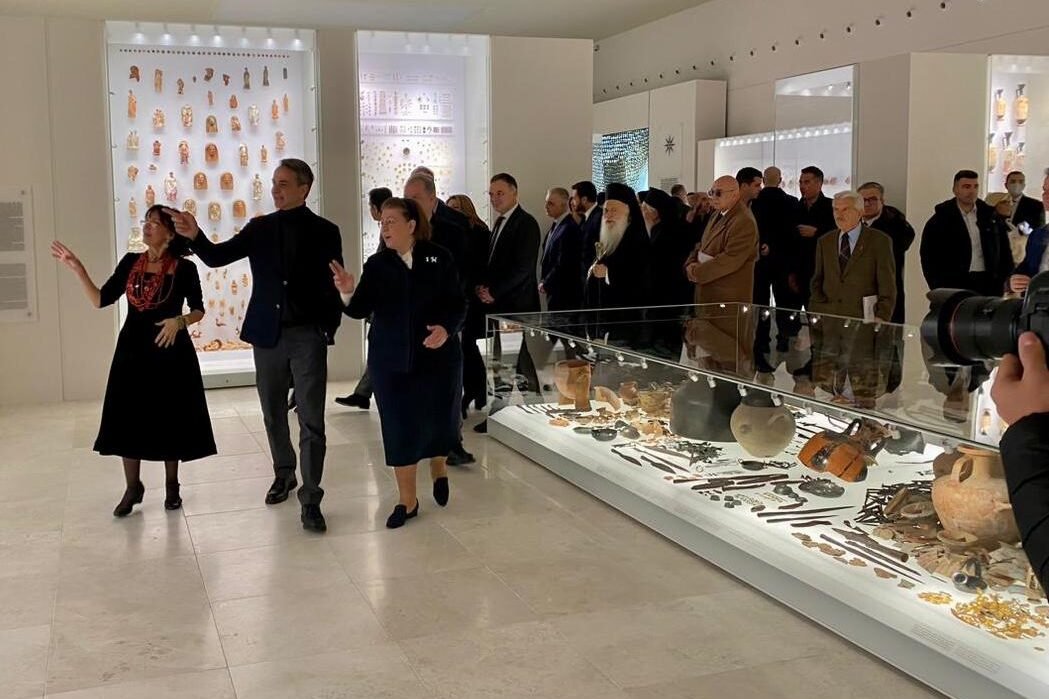Inauguration of the Multicentre Museum of Vergina
A vision of decades, the new, multi-morphic, central building of the Polycentric Museum of Aigai, was inaugurated this morning by Prime Minister Kyriakos Mitsotakis, in the presence of the Minister of Culture and Sports, Lina Mendoni. The museum is a new, holistic and dynamic approach to the relationship between archaeological site – museum – visitor. It integrates and connects the new central building with the entire archaeological site of Aigai (Vergina), which includes the Palace of Philip, the Temenid burial complex and the Museum of the Royal Tombs. The central museum building was designed to become the notional gateway to the archaeological site and to the history of Aigai, to the history and culture of the Macedonians, but also to the Hellenistic World, since it will be the natural home of the digital museum “Alexander the Great, from Aigai to the World”.
“The Multicentre Museum of Aigai, a reference point for ancient history and the modern development dynamics of Imathia, was inaugurated today, December 19, 2021, by Prime Minister Kyriakos Mitsotakis.”
As Prime Minister Kyriakos Mitsotakis stressed, “The archaeological site of Vergina and Aigai with its global radiance is only the beginning of a cultural legacy of tens of centuries. And this multi-centric promotion through the operation of the new museum aspires to present, along with the ancient creosote, its fruitful journey through the years. Because the past must always last in the present and participate in the construction of the future of every society.
It is an effort that goes beyond the borders of not only Imathia, but also of the whole of Greece. I dare say that this is a significant contribution to the evolution of the world’s cultural heritage.
This museum embodies a new dynamic approach to its relationship with the archaeological site, as it unites the entire building complex which comes from the deep historical past. The palace of Philip, the tomb cluster of the Temenides, but of course the royal tombs. In other words, it follows the settlement model of the ancient city itself, an open asterism, with successive settlements around a central core.”



